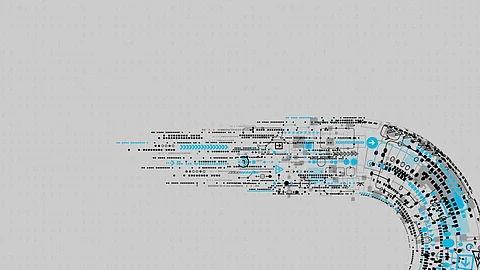

The age of Robotic Process Automation (RPA) has given way to the new wave of Digital Process Automation or DPA. Over the years, Automation has remained to be a crucial element to the next phase of digital transformation, driving new levels of customer value including higher quality and dependability, deeper personalization, faster product delivery and greater convenience. In 2018, American market research Company, Forrester predicted that automation would alter the workforce, augment employees, and drive new levels of customer value. Since then, RPA vendors have reached new heights in valuation and funding. UiPath reached $3 billion valuations in September, while physical robotics leader ABB announced plans to have robots build other robots in its production process. Not left far behind, MIT has announced a $1 billion initiative for a new college focused on AI.
In today's challenging digital marketplace, business houses must focus on innovation and efficiency to stay ahead of the competition by rapidly automating processes to deliver excellence. Among the fastest-growing segments of business technology today, Robotic Process Automation and Digital Process Automation rule the pack. Robotic Process Automation market is estimated to reach $2.46 billion by 2022 growing at a CAGR of 30.14% between 2017 and 2022 promising huge growth opportunities.
Digital Process Automation is a digital transformation solution which extends your processes to partners, customers and suppliers empowering them to respond quickly, act proactively and provide a great customer experience. DPA deploys digital technology to perform a set of processes to accomplish a function or a workflow. DPA does not focus on cost-cutting alone, instead aims to extend business processes to customers, suppliers, and partners, giving them better experiences when they interact with the company.
Robotic Process Automation applies technology which allows employees to configure a computer software or a robot to capture and automate existing applications for processing a transaction, manipulating data, triggering responses and communicating with other digital systems.
RPA businesses offering their customers a robust set of tools, with integration support and management for their business customers, have a massive opportunity to flourish across all sectors. They can help companies to eliminate the challenges which arise from old legacy processes and tasks to support the next-generation of digital transformation along the way.
As DPA gains prominence, the question remains that do Robotic Process Automation and Digital Process Automation compete with or complement each other? While both are distinct technologies, Robotic Process Automation and Digital Process Automation envisage the common goals, which when deployed together lay the foundations of a powerful platform to enable digital transformation organization-wide to provide new age customer experiences.
Intelligent & Robotic Process Automation (I&RPA) is a new and revolutionary process which is driving cost-effective business operations through the rapid automation of administrative processes, with or without deploying machine learning and artificial intelligence. I&RPA terminology is all about software processes and is not about the physical robot itself. Unlike traditional application software, robotic software creates a digital workforce which runs on application software in the same way a user does. Cogitative Automation or AI enabled RPA operates on top of existing applications and orchestrates other application software through the existing application's user interface.
While interest in robotic process automation (RPA) continues to soar, Intelligent Process Automation is the new trend, applying Artificial Intelligence and related new technologies, like Cognitive Automation, Machine Learning and Computer Vision to Robotic Process Automation. In essence, IPA makes the robot think like a human before it acts. At its core, IPA is an emerging set of new technologies combining fundamental process redesign with machine learning and robotic process automation. Intelligent Process Automation or Cognitive Automation is a suite of business-process improvements and next-generation tools that make the work easy for the knowledge worker by removing replicable, routine and repetitive tasks. Additionally, Cognitive automation has the potential to radically improve customer journeys by simplifying interactions and speeding up processes.
Traditional RPA technology will pave way for IPA to mimic the activities carried out by humans over time and relearning them to perform even better. Cognitive automation will bring traditional levers of rule-based automation to collaborate with decision-making capabilities, deep learning and cognitive technology to improve employee performance, reduce operational risks, and improve response times and customer journey experiences in the years to come.
Join our WhatsApp Channel to get the latest news, exclusives and videos on WhatsApp
_____________
Disclaimer: Analytics Insight does not provide financial advice or guidance. Also note that the cryptocurrencies mentioned/listed on the website could potentially be scams, i.e. designed to induce you to invest financial resources that may be lost forever and not be recoverable once investments are made. You are responsible for conducting your own research (DYOR) before making any investments. Read more here.
